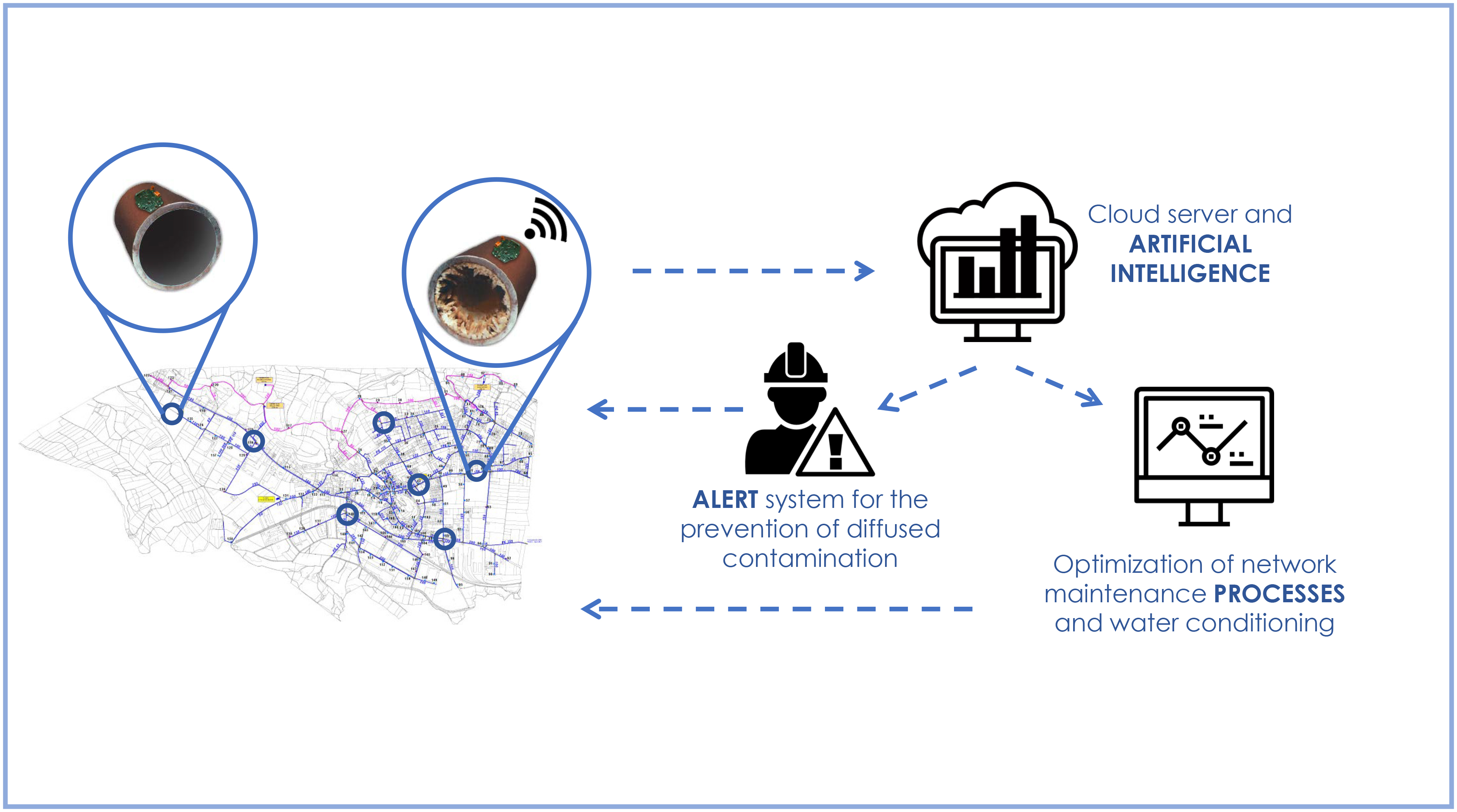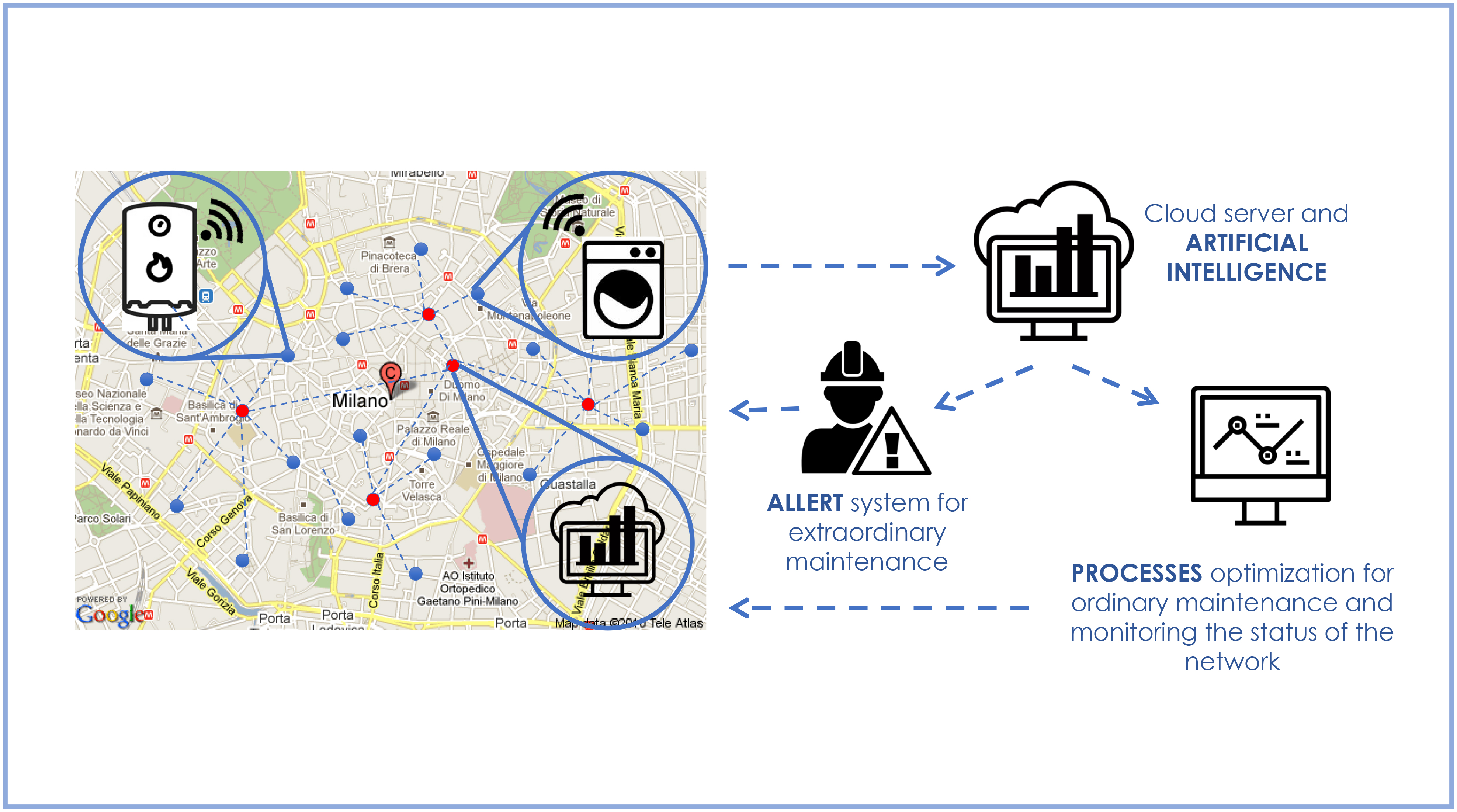Dirty Sensing
The formation of inorganic deposits and bacterial biofilms in water distribution systems has a double relevance: on the technical aspects, due to the wear of the water pipes and the pressure drop caused by the reduction of the internal diameter of the tube; from a health point of view, if we consider the continuous release in water, by the biofilm, of microorganisms, some of which are potentially pathogenic.
To address these problems, a group of researchers, from the Department of Civil and Environmental Engineering and the Department of Electronics, Computer Science and Bioengineering, designed Dirty Sensing: a miniaturized device which monitors the thickness of the deposit layer, and at the same time, discriminates between its inorganic or biological nature.
This characteristic, which represents the main point of the innovation, depends on the measurement of the electrical impedance between pairs of planar electrodes applied on the internal surface of the duct and placed at a distance comparable with the thickness to be measured.
“Surprisingly, during the tests, we discovered that it is possible to distinguish the nature of the deposit as it affects the ionic resistance: a growing thickness of the inorganic layer determines an insulating effect on the sensor, the resistivity increases and the conductivity decreases; while the increasing thickness of the biological layer enhances the production of ions, derived from bacterial metabolism, resulting in an increased conductivity and a decreased resistivity.” Explains the engineers Antonelli, Carminati and Turolla, inventors of technology.
The sensorized device, simple, economical and modular, is designed to transmit real time data to an external cloud server which is used as database for a sophisticated artificial intelligence. The software is programmed to constantly monitor the status of the systems and sending an alert in case the security threshold is reached. Furthermore, the artificial intelligence is designed to provide services of optimized management, such as planning ordinary and extraordinary maintenance and efficiently calibrating process parameters in order to save resources and limit waste.
Future steps are to integrate the technology with other sensors capable of detecting metal ions, released in water as a result of oxidation phenomena, which may represent another source of contamination of the water network and a threat to public health. To date, the fields of application are different and range from the management of water networks and district heating to the monitoring of household appliances. The technology of Dirty Sensing can have many other applications such as in the food industry and Smart Cities.

